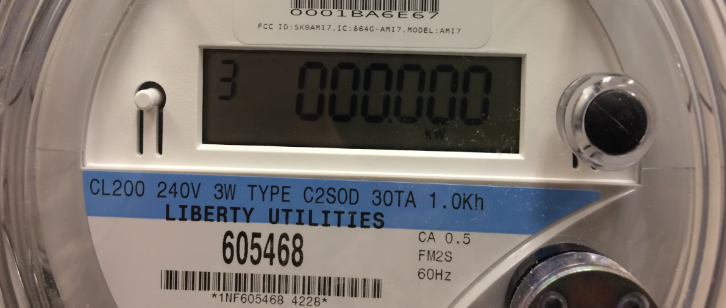Meter Reading - Residential - California Electric - Liberty
How Liberty Reads Your Meter
Liberty’s meter readers will stop by your home or business about once a month to read your electric meter. Access to your electric meter is necessary to determine how much electricity your home or business used during the month. Your electric usage is then used to help calculate your monthly bill.
How to Read Your Electric Meter
Electric use varies from household to household, depending upon the size of your home, number and type of appliances and how you use them. Your electric meter keeps track of it all for you. Electric meters record the total amount of electricity used. You can look at your usage by learning to read your own meter.
Like when you purchase pounds of meat, quarts of milk or gallons of gasoline, you buy kilowatt hours (kWh) of electricity. One kWh of electricity supplies enough energy to light ten 100-watt lamps for one hour.
Many of our customers have digital meters (pictured below). To read a digital meter, simply read the numbers displayed left to right to track your usage.

- Read all the dials from right to left, and write the numbers down from right to left.
- When the hand on any dial is between two numbers, read the smaller number.
- If the pointer appears to be exactly on a number, record the next lowest number unless the pointer on the dial to its right has passed zero.
In the example below, the reading is 83895:

Can you show me step by step?
- DIAL 1: The pointer is directly on number 5. Record as 5.
- DIAL 2: The pointer has just passed 9, and is between 9 and 0. Record as 9.
- DIAL 3: The next dial has passed 8, and is between 8 and 9. Again, record the smaller number which is 8.
- DIAL 4: The pointer looks like it is right on the 4, but the dial to its right has not passed zero. So, you would record this dial as 3.
- DIAL 5: The pointer is between 8 and 9. Record the smaller number which the pointer just passed, which is 8.
Keep these hints in mind:
- Notice that the pointers on the first, third and fifth dial move in the same direction as the hand of a clock.
- The second and fourth pointers move in the opposite direction.
- Stand directly in front of the meter so you can clearly see the location of each pointer.
- Read the numbers from RIGHT to LEFT, and write the numbers down in the same order (from right to left).
- If the pointer is between two numbers, read the number the pointer has just passed, always the lowest number.
- If the pointer is between 9 and 0, always read 9.
- If the pointer appears to be exactly on a number, read the next lowest number unless the pointer to its right has passed zero. Since the first dial has no dial to its right, this does not apply to dial 1.
